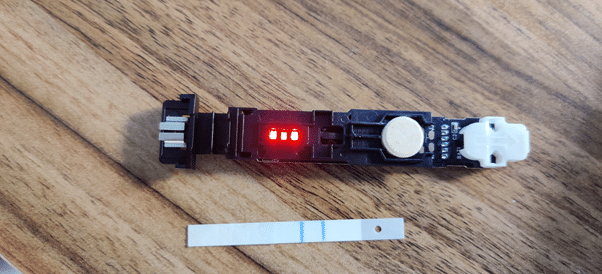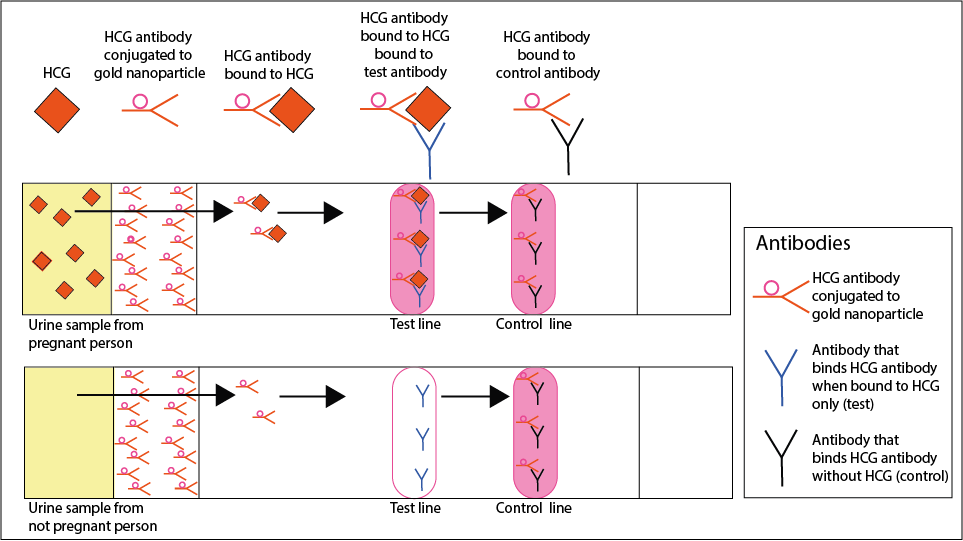Picture the scene: someone you care a lot about buys a medical test over the counter, but instead of buying the one that’s a few pence per test, they insist they want the more expensive one because they think it’s “more accurate”.
Being the good skeptic that you are, you wonder if that’s really true. How does the pricey test compare to the budget one? You’ve heard all the stories about people being scammed out of money for little more than branding. So you buy the test. You take it apart to see how it works. And it turns out it’s exactly the same as the budget one, only 20 times the price. You fire out a ranty tweet explaining your findings and excoriating the company who produced the needlessly expensive test. Case closed, right?
That’s what one Twitter user did when their wife wanted to confirm their pregnancy with a digital test. She’d had a positive test from a few of the cheaper strip tests but she wanted to confirm it with a “more accurate” digital test. The husband was skeptical, so he took apart the test to look inside. And, lo and behold, the test was a simple strip packaged up in some plastic casing with electronic detectors and an LCD screen that announces if you are “pregnant” or “not pregnant”. A few months later, once the pregnancy was announced, he fired off the tweet showing the scam and the tweet went viral. At the time of writing the initial tweet has over ten thousand likes and hundreds of replies.

I have to confess; I liked the tweet myself. It’s a good tweet: it illustrates very neatly that more expensive pregnancy testing methods work the same way as the cheaper ones. But there is a problem here. I mean it’d be a fairly dull story for me to tell you if there wasn’t.
Once this first tweet went viral, a second Twitter user did the same thing, buying a test from a brand called Equate, and took it apart. Being a techy person they stripped it all the way back, talked about how it all worked and how much of a waste of plastic and technology it was to generate these single use devices and then charge people more for something they don’t need.
But what neither tweeter – and many of the responders – failed to consider, was whether it really was something that people who want to test for pregnancy don’t need? Is it really a pointless piece of e-waste that’s filling up landfill and scamming people who might be pregnant, or does it serve a genuine purpose?
To understand this, it’s important to understand how pregnancy tests work, and how the simple strip tests differ from the digital tests. So first let’s take a look at the simple strip test. On Amazon you can get a pack of 15 for less than £3 – that’s 20p per test. It says “99%” accurate.
The tests are a fairly straight forward antibody test looking for a hormone called human chorionic gonadotropin (HCG). HCG is produced by the placenta. You only have a placenta if you’re pregnant. Clever ey? The small absorbent strips are infused with an antibody that recognises and binds to HCG which is linked to a gold nanoparticle. If there’s any HCG in your urine, it binds to the gold labelled antibody and along with the urine it absorbs its way up the strip until it reaches the test line. The test line has another antibody on it and if (and only if) your urine sample has interacted successfully with the first antibody (i.e. there’s HCG in the urine), then this second antibody binds to it and the test strip turns pink.
Positive result; pregnancy. However, tests can go wrong for loads of reasons. Maybe during manufacture the machine misses the strip and fails to add any antibody to that test strip. If that happened, then there’s nothing to turn pink if there’s HCG in your urine, which means a negative result doesn’t necessarily mean no pregnancy. So you need a way to prove the test is definitely ok and it’s definitely working. There’s a third antibody on a second line (keeping up?) and as the urine continues to travel up the absorbent paper, it reaches this second line, the control line and no matter whether there’s any HCG or not, it recognises the gold-linked antibody and it turns pink. The control line proves that the antibodies definitely got added to the paper, and that all the antibodies are doing what they should do and reacting in the right way.

You have three potential results:
- The test line is pink and the control line is pink = positive result; the test worked and you’re pregnant
- The test line is not pink and the control line is pink = negative result; the test worked and you’re not pregnant
- The test line is either pink or not pink, and the control line is not pink = inconclusive result; the test failed, you can’t be sure the result is accurate, you need to take another test
These simple test strips are great. They’re really, really accurate, and they’re really, really cheap. But they are not perfect.
They aren’t always easy to interpret – it’s not a yes or no answer, it’s contingent on that control line showing that the test worked properly. There are many reasons why a person might find the control line confusing and make a mistake in reading the test. Especially if the result holds some emotion for them.
The other problem is that you need to dip them into a urine sample. These test strips have a small line a part way up the test that is the “max dip” line. You need the urine sample to absorb slowly up the strip so it encounters all the antibodies in the right order. So you can’t just pee on the strip. You need to pee in a clean, disposable pot and dip the strip into the pot and hold it there for 5 seconds. Not everyone has access to the facilities that allow them to pee into a such a pot. Either they don’t have access to a pot they can pee into, or they don’t have access to a safe bathroom that gives them the space and privacy to pee into a pot.
And then there’s the issue of ability, or disability. The test strips are a small, thin piece of paper about the size of a coffee stirrer. If you have mobility problems in your hands you might struggle to hold it. It’s also a visual test, the lines are quite small. If you have visual impairment you might struggle to read the test. You might not have someone you feel comfortable (or safe) asking for help.
The plastic, digital tests that have been doing the rounds on Twitter work in exactly the same way – a simple test strip. They cost around £8.50 for two tests on Amazon. But inside the plastic casing are some small LED lights that light up the test and control line and two light sensors that detect the result. They then use a small computer to convert the result into words. They have multiple benefits. Firstly – they’re really easy to interpret. It says “pregnant” or “not pregnant”, no checking and rechecking the instructions to be absolutely sure you got it right. I can’t overstate how reassuring that is for people who want to be really, really sure about the result.
Secondly, they’re much easier to use. These tests keep the strip encased in plastic and they have another absorbent strip that sticks outside of the plastic. You can hold that part into the flow of your urine. No need for a pot, no dipping. Which means you can take the test anywhere. If you don’t have access to clean, safe, private bathroom facilities, you can still find a place to take these tests. The tests are also much bigger, they’re easier to hold if you have mobility issues and the test identifies the line for you. You don’t need to worry if you can’t quite see a faint line. The sensors are way more sensitive than your eyes. And if you have visual impairment that allows you to read a digital screen, they are easier to read. Not perfect for people who are blind or visually impaired but certainly better. Because of that, you could argue, as tech blogger Naomi Wu does, that these digital tests might be more accurate, purely because they’re easier to use: you’re less likely to make a mistake and the machine can detect weak results. But, the companies who sell these tests do not claim that they are more accurate. Their promotional material says the same as the paper test strips: “99% accurate”. Any notion that these are more accurate comes from the perception and assumptions of the consumers (albeit a perception the manufacturers and advertisers may not go out of their way to dispel).
But it’s still important; if people think they’re more accurate and are buying them solely for that reason – then that is wasteful. And these digital tests are single use tech and plastic that are thrown away after use. They can both be useful tests for accessibility purposes, and a waste of plastic, electronics and money for people who don’t need them. Companies could work to make streamlined, less wasteful digital tests or even reusable plastic tests that can be fitted with paper test strips. But I guess that nuance is hard to get across in 240 characters.
If you want to hear more about pregnancy tests including how the tests that tell you how far along you are work, and that weird Tik Tok trend, listen to episode 285 of Skeptics with a K.



